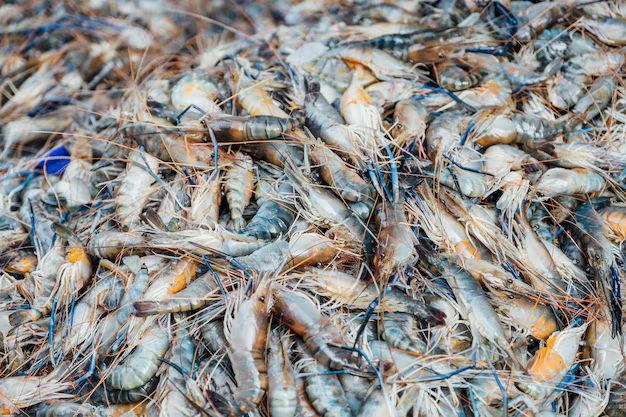Keeping Shrimp Fresh: How Long Is It Good For in the Refrigerator?
Few things are as delightful as a fresh shrimp dish. Whether served in a cocktail or tossed with pasta, shrimp can elevate any meal to gourmet status. However, maintaining shrimp's freshness and flavor involves knowing how long it can be stored safely in the refrigerator. If you've ever wondered how to maximize the shelf life of your shrimp, you're not alone. Storage is crucial to ensure that shrimp remains delicious and safe to eat. This article delves into the nuances of shrimp storage, offering tips and insights into keeping your shrimp fresh for longer.
Understanding Shrimp Shelf Life
The first step toward extending the freshness of your shrimp is understanding its shelf life. Uncooked shrimp, when kept in the refrigerator, is generally good for one to two days. Meanwhile, cooked shrimp may last in the refrigerator for three to four days. These time frames are standard and depend on factors like the shrimp's initial freshness and how it is stored.
🧊 Key Factors Affecting Shrimp Storage
- Temperature Control: Maintaining a consistent refrigerator temperature of 40°F (4°C) or lower is critical.
- Storage Conditions: Utilizing air-tight containers or vacuum-sealing can prevent exposure to air and moisture, which speeds up spoilage.
- Initial Freshness: Fresh shrimp bought from a reputable source will naturally last longer.
Proper Storage Techniques
Proper storage can make a significant difference in how long your shrimp remains good for consumption. Here’s how to maximize shrimp freshness whether they’re cooked or uncooked.
Storing Uncooked Shrimp
- Freshness Check: Ensure the shrimp is fresh at the time of purchase. Check for a slight ocean scent and firm bodies.
- Preparation: If not pre-cleaned, it’s best to devein and rinse the shrimp under cold water.
- Proper Packaging: Place the shrimp in a sealed container or a spill-proof bag, removing as much air as possible.
- Refrigeration: Situate the shrimp in the coldest part of the fridge, often at the back.
Storing Cooked Shrimp
- Cooling Promptly: Cooked shrimp should be cooled to room temperature before refrigeration.
- Storage Containers: Use air-tight containers to prevent moisture and bacteria from spoiling the shrimp.
- Labeling: It's a good idea to label containers with the date of cooking to keep track easily.
❗ Additional Tips for Both Types
- Never mix raw and cooked shrimp in the same storage container as cross-contamination can occur.
- For long-term storage, consider freezing shrimp, which can extend its life to several months.
Freezing Shrimp for Extended Shelf Life
For those who buy shrimp in bulk or want to keep it for an extended period, freezing is an excellent option. Frozen shrimp can last up to six months, maintaining both taste and texture when done correctly.
How to Freeze Shrimp
- Prepping: Clean and devein uncooked shrimp or ensure cooked shrimp is properly cooled.
- Freezer-Safe Packaging: Use freezer-safe bags or containers, and expel all the air before sealing.
- Labeling: Date the packaging to monitor storage time.
- Avoid Repeated Freezing: Try to thaw only the amount you plan to use soon, as repeated freezing and thawing can degrade quality.
🌟 Quick Freezing Tricks
- Ice Glaze: Dip cleaned shrimp in brine and freeze them quickly on a baking sheet. Once frozen, store them in bags. This method creates an ice glaze that protects the shrimp’s integrity.
Recognizing Spoilage
Being able to identify when shrimp has gone bad is critical for safety. Here are some signs that shrimp is no longer edible:
🚩 Signs of Spoiled Shrimp
- Unusual Odor: A strong ammonia odor is a clear sign of spoilage.
- Color Change: Shrimp that turns off-color (like a gray or yellowish hue) should be discarded.
- Texture Issues: A slimy feel is a direct indication of spoilage.
It’s always better to err on the side of caution when consuming seafood, as the freshness of shrimp can impact taste and safety.
Related Tips for Seafood Storage
While understanding shrimp storage is crucial, applying similar principles can be helpful for other seafood types. Proper handling and storage not only protect against spoilage but also retain the best flavors.
🐟 General Seafood Storage Tips
- Inspect Freshness: Ensure seafood passes sensory checks (look, smell, touch) before buying.
- Cold Chain Maintenance: Transport seafood to your home under cool conditions using insulated bags if possible.
- Separate Storage Areas: Store different types of seafood in separate containers to avoid flavor mixing and potential cross-contamination.
Conclusion: Enjoying Shrimp Safely
Understanding how long shrimp is good for in the refrigerator is essential for both flavor and safety. By storing shrimp properly and being aware of spoilage signs, you can enjoy tasty shrimp dishes without worry. Remember, thoughtful storage practices ensure that every shrimp-based meal is as fresh and delicious as possible.
📋 Shrimp Storage Cheat Sheet
- Fresh Shrimp: 1-2 days in the fridge
- Cooked Shrimp: 3-4 days in the fridge
- Frozen Shrimp: Up to 6 months
- Signs of Spoilage: Strong odor, discoloration, slimy texture
By following these storage guidelines, your culinary adventures with shrimp can be both tasty and safe, giving you peace of mind and a satisfying eating experience. Enjoy the delightful and versatile world of shrimp with confidence, knowing exactly how long it will remain in prime condition!
